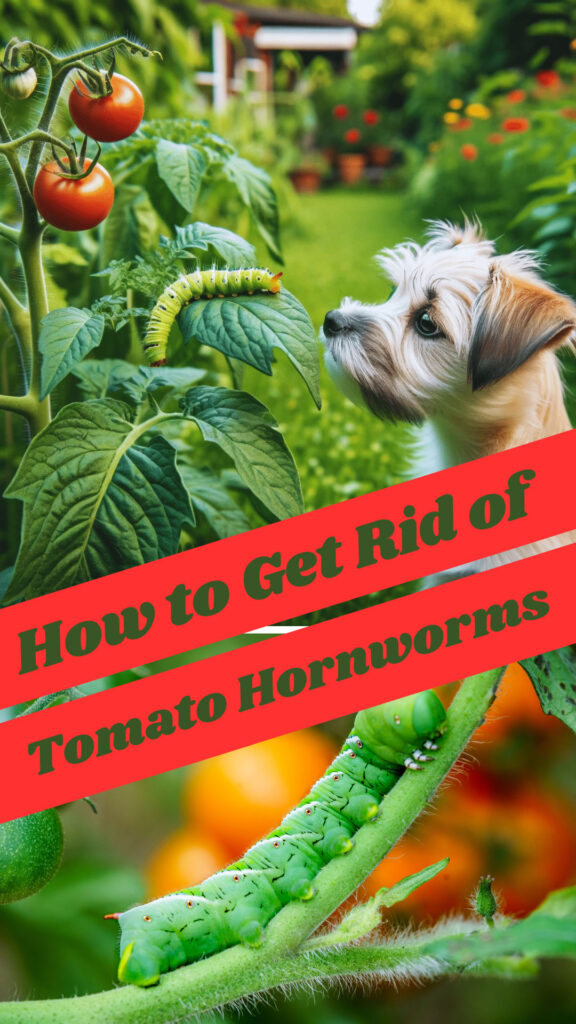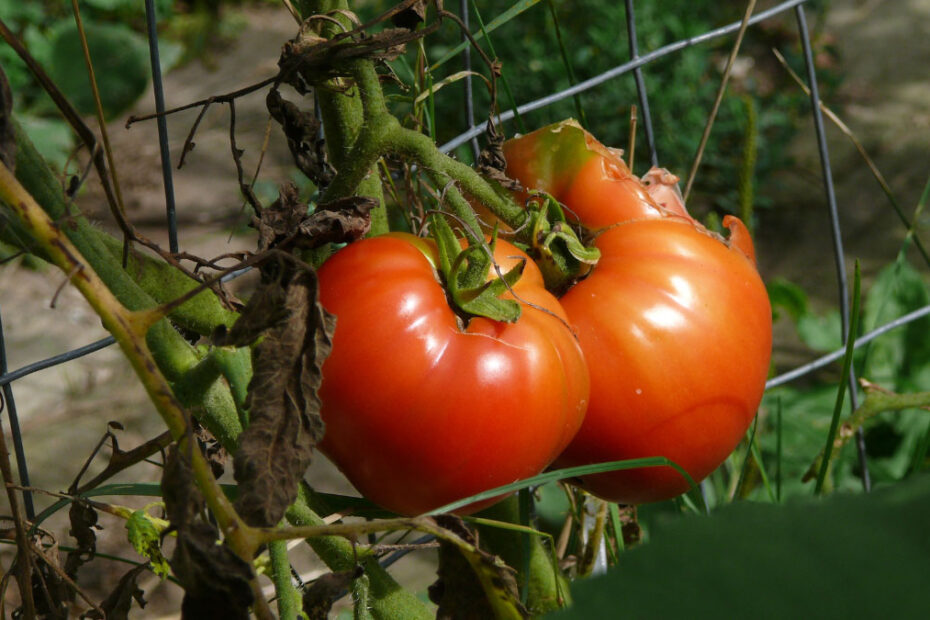Tomato hornworms can wreak havoc on your garden, turning lush tomato plants into skeletons overnight. These large, green caterpillars are notorious for their voracious appetites and can be a gardener’s worst nightmare. But don’t worry—there are effective ways to combat these pests and protect your precious crops.
You’ll need a combination of vigilance and strategic action to keep your garden hornworm-free. From manual removal to natural predators and organic treatments, several methods can help you tackle this problem head-on. Ready to reclaim your garden? Let’s jump into the best strategies for getting rid of tomato hornworms.
Key Takeaways
- Early Identification is Crucial: Regularly inspect tomato plants for signs of tomato hornworms, such as missing leaves, dark green or black droppings, and large green caterpillars with white stripes.
- Use Natural Predators: Introduce beneficial insects like parasitic wasps, ladybugs, and green lacewings to prey on hornworm larvae and maintain a healthy garden ecosystem.
- Organic Removal Methods: Handpick hornworms and use Bacillus thuringiensis (Bt) sprays to manage infestations without harming the environment or beneficial insects.
- Chemical Control as Last Resort: Opt for safe insecticides like Spinosad, Carbaryl, and Permethrin, applying them properly to target hornworms while minimizing risks to other garden inhabitants.
- Implement Preventative Measures: Practice crop rotation and companion planting with basil, marigold, chives, and garlic to naturally deter hornworms and reduce future infestations.

Understanding Tomato Hornworms
Tomato hornworms, among the most destructive pests for tomato plants, require timely identification and intervention to prevent significant crop damage.
Key Characteristics:
- Appearance: Large, green caterpillars measuring up to 4 inches, with white stripes and a horn-like projection on the rear.
- Lifecycle: Moth larvae of the hawk moth, undergoing metamorphosis from egg to larva, pupa, and adult.
- Habitat: Commonly found in gardens feeding on tomato, pepper, potato, and eggplant foliage.
Feeding Habits:
Tomato hornworms are voracious eaters. They primarily consume leaves, stems, and sometimes fruits. You’ll often observe large bites and defoliated areas, which can lead to plant stress and reduced fruit yield.
Identification Tips
Knowing how to identify tomato hornworms is crucial:
- Inspect: Regularly check the undersides of leaves for clusters of tiny, translucent eggs.
- Damage Signs: Look for missing leaves and dark green or black droppings on the leaves and ground.
- Visual Identification: Spot the hornworm’s unique markings—large green bodies with seven white V-shaped stripes.
Action Steps
Implementing control measures early is essential:
- Manual Removal: Handpick hornworms off the plants. It’s effective for small infestations.
- Natural Predators: Introduce beneficial insects like ladybugs and lacewings that prey on hornworms.
- Organic Treatments: Use Bacillus thuringiensis (Bt) sprays, a natural bacterium toxic to hornworms but safe for plants.
Incorporate these identification and action steps into your routine care for robust tomato crops, free from hornworm damage.
Identifying Hornworm Damage
Identifying hornworm damage early can save your tomato plants. Hornworms can cause significant harm, so being able to spot the signs is crucial.
Signs on Tomato Plants
Hornworms leave distinct signs on tomato plants. Look for the following indicators:
- Chewed Leaves: Leaves may have large, irregular holes or be chewed down to the veins.
- Defoliation: Severe infestations can strip foliage, leaving only stems.
- Frass: Dark green or black droppings (frass) can be found on lower leaves or the ground.
- Damaged Fruit: Small green tomatoes often show holes or scars.
- Missing Blossoms: Hornworms can eat entire blossoms, hindering fruit development.
- Nocturnal Feeding: Hornworms primarily feed at night, hiding during the day.
- Camouflage: Their green color helps them blend into foliage, making them hard to spot.
- Rapid Growth: They grow quickly, exacerbating potential damage.
- Larval Stage: Most damage occurs during the larval stage of the moth life cycle.
- Preferred Habitat: Hornworms prefer the underside of leaves, where they’re less visible.
Natural Predators
Using natural predators is an effective way to control tomato hornworms without resorting to chemical treatments. You can leverage beneficial insects and animals to maintain a healthy balance in your garden.
Beneficial Insects
Beneficial insects help control tomato hornworm populations by preying on them. Here are some common beneficial insects you can introduce:
- Parasitic Wasps (Braconidae): These tiny wasps lay their eggs inside hornworm larvae. The wasp larvae feed on the hornworm from the inside, eventually killing it.
- Ladybugs (Coccinellidae): Ladybugs primarily eat aphids but will also consume hornworm eggs and young larvae.
- Green Lacewings (Chrysopidae): Lacewing larvae, known as “aphid lions,” feed on a variety of soft-bodied pests, including hornworm eggs and larvae.
Introducing these insects into your garden can reduce hornworm numbers effectively.
Birds and Small Mammals
Birds and small mammals significantly impact hornworm populations. By creating a habitat that attracts these natural predators, you enhance your garden’s defense against these pests:
- Birds: Certain birds, like robins and sparrows, consume hornworm larvae. Providing bird feeders and birdhouses encourages these birds to visit your garden.
- Small Mammals: Animals like toads and shrews can also help control hornworms. Maintaining a garden environment that supports a diverse range of wildlife, such as leaving leaf litter and providing water sources, can attract these helpful animals.
These natural predators play a crucial role in maintaining the ecological balance in your garden. By fostering a habitat that supports beneficial insects, birds, and small mammals, you can effectively manage tomato hornworms and protect your plants.
Organic Control Methods
Tomato hornworms can cause significant damage to your tomato plants, but organic control methods offer effective ways to manage these pests without chemicals. Employing natural techniques ensures a safer, eco-friendly approach.
Handpicking Hornworms
Handpicking hornworms from your tomato plants is a straightforward and immediate method to reduce their population.
- Examine plants daily: Inspect your tomato plants thoroughly, focusing on the undersides of leaves and stems where hornworms often hide.
- Use gloves: Wear gloves to protect your hands from the hornworms’ spines which can cause irritation.
- Remove hornworms: Pick them off by hand and drop them into a bucket of soapy water to kill them.
- Check for eggs: Look for and remove any hornworm eggs to prevent future infestations.
Using Bacillus Thuringiensis (Bt)
Bacillus thuringiensis (Bt) is a natural bacterium that targets caterpillar pests, including hornworms, without harming beneficial insects or plants.
- Select Bt products: Choose Bt products labeled for caterpillars and specifically for use on vegetables.
- Apply Bt: Follow the instructions on the product label for mixing and applying Bt. Spray it on all plant surfaces but concentrate on the undersides of the leaves where hornworms feed.
- Reapply: Reapply Bt every week or after heavy rain, as it can wash off the plants.
By utilizing these organic control methods, you can effectively manage tomato hornworms and protect your tomato plants in a safe and sustainable way.
Chemical Control Options
Chemical control options offer an alternative to organic methods for managing tomato hornworms. While organic solutions prioritize safety and environmental health, chemical controls can provide a faster, more potent response when infestations are severe.
Safe Insecticides
Certain insecticides are effective in combating tomato hornworms without posing significant risk to your plants or the environment. Here are some options:
- Spinosad: A natural substance produced by soil bacteria. It’s effective against caterpillars like hornworms.
- Carbaryl: Known as Sevin, this chemical is widely used but should be applied with caution to avoid harming beneficial insects.
- Permethrin: A synthetic pyrethroid that offers quick knockdown of pests, but it can be toxic to other insects and aquatic life.
Application Tips
Proper application ensures the effectiveness of insecticides and minimizes harm to beneficial insects and plants. Follow these tips:
- Timing: Spray insecticides during the early morning or late evening to reduce impact on pollinators.
- Coverage: Ensure thorough coverage of both the upper and lower leaf surfaces, where hornworms often hide.
- Frequency: Reapply as needed, following the product label’s guidelines, usually every 7-10 days during peak infestation periods.
- Rotation: Rotate types of insecticides to prevent pests from developing resistance.
By selecting safe insecticides and applying them correctly, you can protect your tomato plants from hornworm damage while preserving the health of your garden ecosystem.
Preventative Measures
Preventing tomato hornworms involves adopting proactive practices that safeguard your plants from these pests. Integrate diverse methods to ensure a healthy and resilient garden.
Crop Rotation
Crop rotation disrupts the life cycle of pests, including hornworms.
- Definition: Rotating different crops in the same soil sequentially, rather than growing the same plant in the same spot every season.
- Plan: Swap your tomato plants with non-host crops like beans or corn the following year.
- Benefits: Reduces pest populations, improves soil health, and decreases the chances of soil-borne diseases.
Crop rotation minimizes pest reoccurrence by altering the habitat characteristics.
Companion Planting
Companion planting leverages the natural repellent properties of certain plants.
- Definition: Growing different plants close to each other for mutual benefits such as pest control, improved growth, and crop yield.
- Good Companions for Tomatoes:
- Basil: Repels hornworms and enhances tomato flavor.
- Marigold: Deters a wide range of pests and improves soil health.
- Chives and Garlic: Emit odors that pests dislike.
Using marigolds and basil near tomatoes can keep hornworms at bay naturally.
By incorporating crop rotation and companion planting, you can effectively prevent tomato hornworm infestations and cultivate healthy tomatoes season after season.
Conclusion
Protecting your tomato plants from hornworms doesn’t have to be a challenging job. By staying vigilant and using a combination of manual removal, natural predators, and organic treatments, you can effectively manage these pests. Early intervention is key to preventing significant damage.
Consider incorporating beneficial insects and birds into your garden to naturally control hornworm populations. If needed, safe insecticides can be used for severe infestations, ensuring minimal harm to your plants and the environment.
Don’t forget the importance of preventative measures like crop rotation and companion planting. These strategies can help disrupt pest life cycles and deter hornworms, keeping your tomato plants healthy and thriving.
Frequently Asked Questions
What are tomato hornworms?
Tomato hornworms are large, green caterpillars that feed on tomato plants, causing significant damage if not controlled.
How can I identify tomato hornworms?
Tomato hornworms have a distinct green color, singe white stripes, and a horn-like protrusion on their rear.
What are the signs of hornworm infestation?
Look for chewed leaves, frass (droppings), damaged fruit, missing blossoms, and defoliation.
How can I control tomato hornworms naturally?
Manual removal, introducing beneficial insects like parasitic wasps, ladybugs, and green lacewings, and using organic treatments such as Bacillus thuringiensis (Bt) sprays are effective.
Why is early intervention important for managing hornworms?
Early action prevents extensive damage, allowing you to maintain healthy and productive tomato plants.
What are some chemical control options for hornworms?
Safe insecticides include Spinosad, Carbaryl, and Permethrin. Follow application tips for best results and to minimize risks.
What preventative measures can I take to protect my plants from hornworms?
Implement crop rotation and companion planting with natural repellents like basil and marigolds to deter hornworms.
How do natural predators help in controlling hornworm populations?
Beneficial insects and birds help reduce hornworm numbers naturally, minimizing the need for chemical treatments.
What are hornworms’ feeding habits and preferences?
Hornworms feed nocturnally and prefer hiding on the underside of leaves, making them challenging to spot.
How often should I check my plants for hornworms?
Regular inspections, especially during peak growing seasons, are crucial for early detection and effective control of hornworms.
